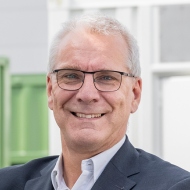


Go to next article

Go back
MR: We face a huge challenge worldwide. To combat human-induced climate change and ensure that the earth does not warm too much, we will have to decarbonise our society at a record pace. The most impactful way to do this is to electrify what we can and generate electricity sustainably which will mostly be done using wind or the sun. As this type of generation fluctuates, while we continue to desire electricity on demand, we will need energy storage. Battery energy storage is one of several solutions available but is expected to be the most important and so we will continue to innovate hard. The whole industry is still really at the start of this and so we have much work to do together. The potential is enormous!
How do you see the role of energy storage systems
in the future?
ER: The trend for the coming years is to lower c-rates - the rate at which a battery can be discharged relative to its maximum capacity. This is because greater penetration of renewable energy means that batteries are required to provide power over a longer period of time to rectify any surpluses and shortages. The business case is supported because lower c-rate batteries have lower costs, battery prices are falling and variation in energy prices is increasing.
As well as mobile solutions, another trend I’m seeing is combined wind and solar parks, developed incrementally. Storage and batteries create inertia by replacing the rotating mass of power stations, as energy production transitions from conventional power to renewable energy.
AP: The majority of battery energy storage applications are still traditional – so used to meet network stabilisation, congestion management and temporary storage needs - and these needs will only increase in future, as renewables penetration and energy demand continue to grow.
Watch video
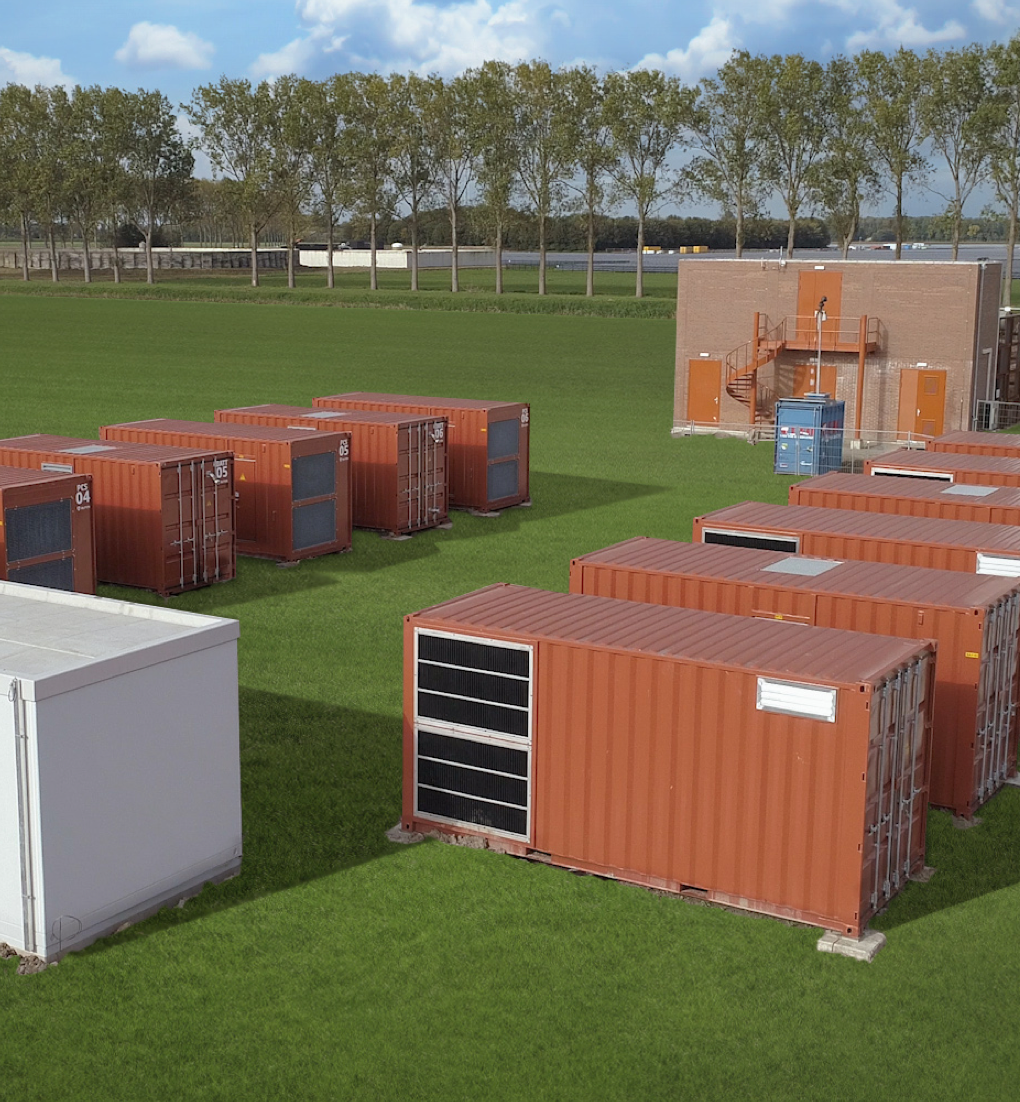
Watch video
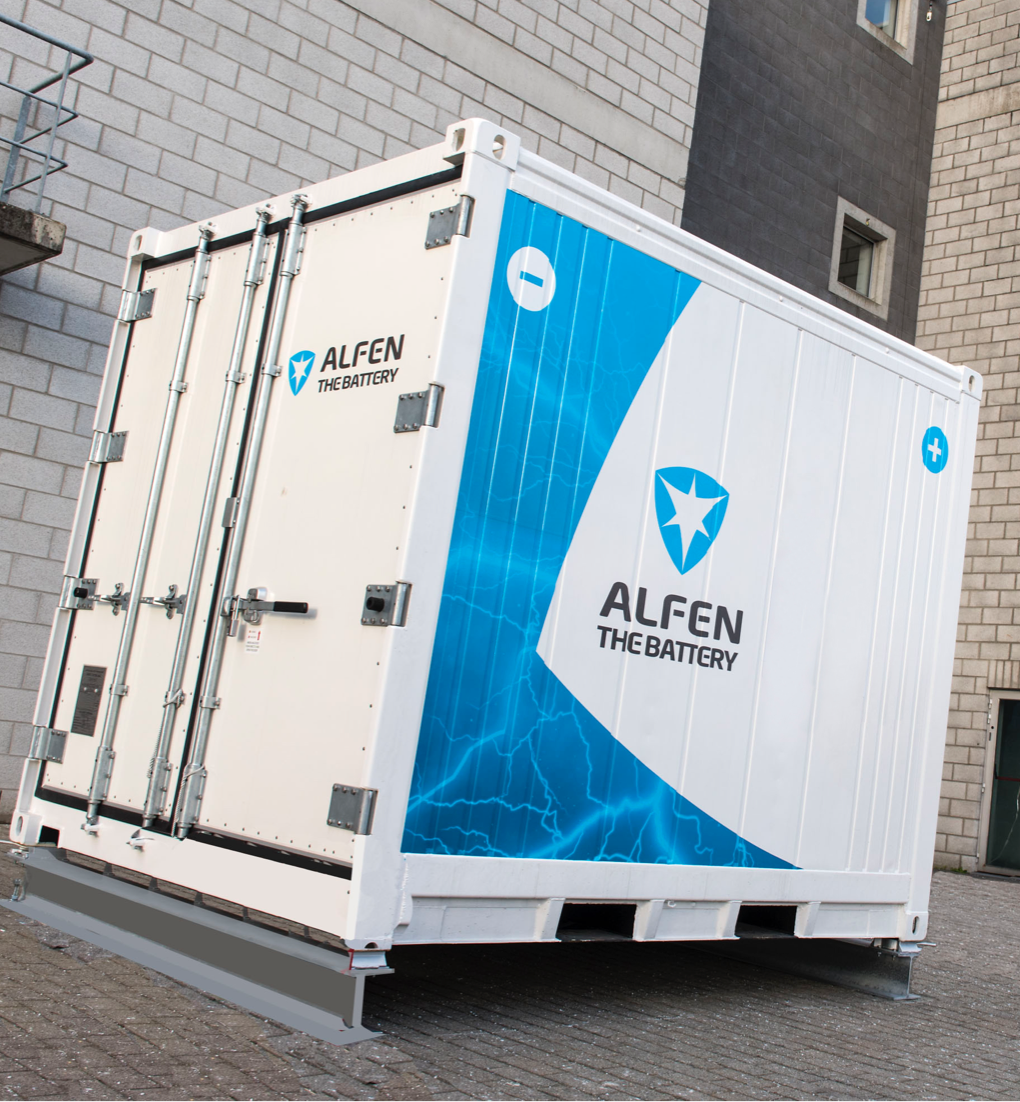
Tell us about the storage market today
AP: The applications for energy storage systems are continuing to expand and, as a result, their suitability for a range of different industries. Rather than being seen as simple storage devices, they are increasingly considered as part of the foundations of much larger, modular energy systems, offering multiple ‘stacked’ benefits. As a result, one of our own principels concerning storage is to ensure interconnectivity and scalability.
Our solutions are also increasingly being requested and deployed internationally. The majority are still used for network stabilisation and trade but, increasingly, this is only part of the story.
TheBattery Mobile added another dimension.
How did it come about?
AP: In 2017, it struck me that, while I was not allowed to drive my trusty old car into many city centres, the same did not apply to diesel generators which seemed to be roaring at every construction and temporary event site in town. It became apparent that there was an opportunity to provide a cleaner solution but it would need to be smaller than our current storage solutions - and mobile, because of the temporary nature of the use in these locations. At the same time, the founders of green power solutions company, Greener, were having similar thoughts, mostly motivated by the desire to make festivals cleaner and so, in 2018, we delivered our first TheBattery Mobile to them. They now have 43 of them which they rent out for use in a very diverse range of situations and locations.
ER: Developing a mobile container meant we greatly increased the application of energy storage systems. Suddenly, there was a green alternative to a diesel generator. TheBattery Mobile uses automotive batteries which have been extensively tested for mobility applications and are therefore safe to be moved about.
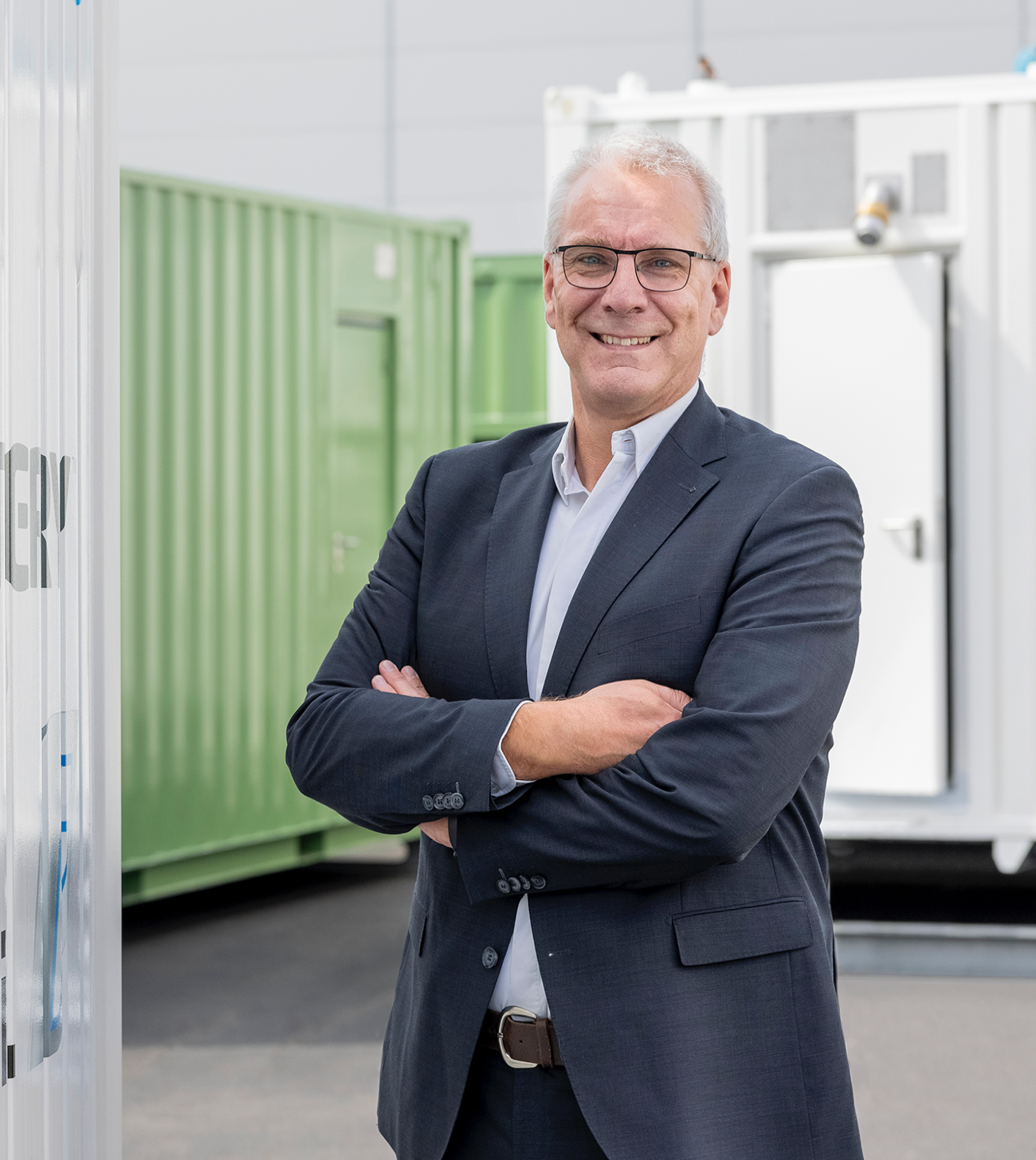
AP: We gained a lot of experience through trial and error though, much of it through pilot projects. This process was very necessary to arrive at our current high quality, reliable solution. Technically, the development has always gone well but some of the resulting products were too custom-made to make them commercially viable.
ER: From December 2015, when we actually started doing commercial projects, battery storage began to gain traction internally and externally and so we decided to scale up, which happened in 2016-2017. The early commercial projects typically saw batteries used for frequency response - network stabilisation based on frequency control. The very first was for onshore wind and this was soon followed by Vattenfall’s Alexia project, Engie, and many others.
AP: Frequency response is still an important use-case in almost all current projects.
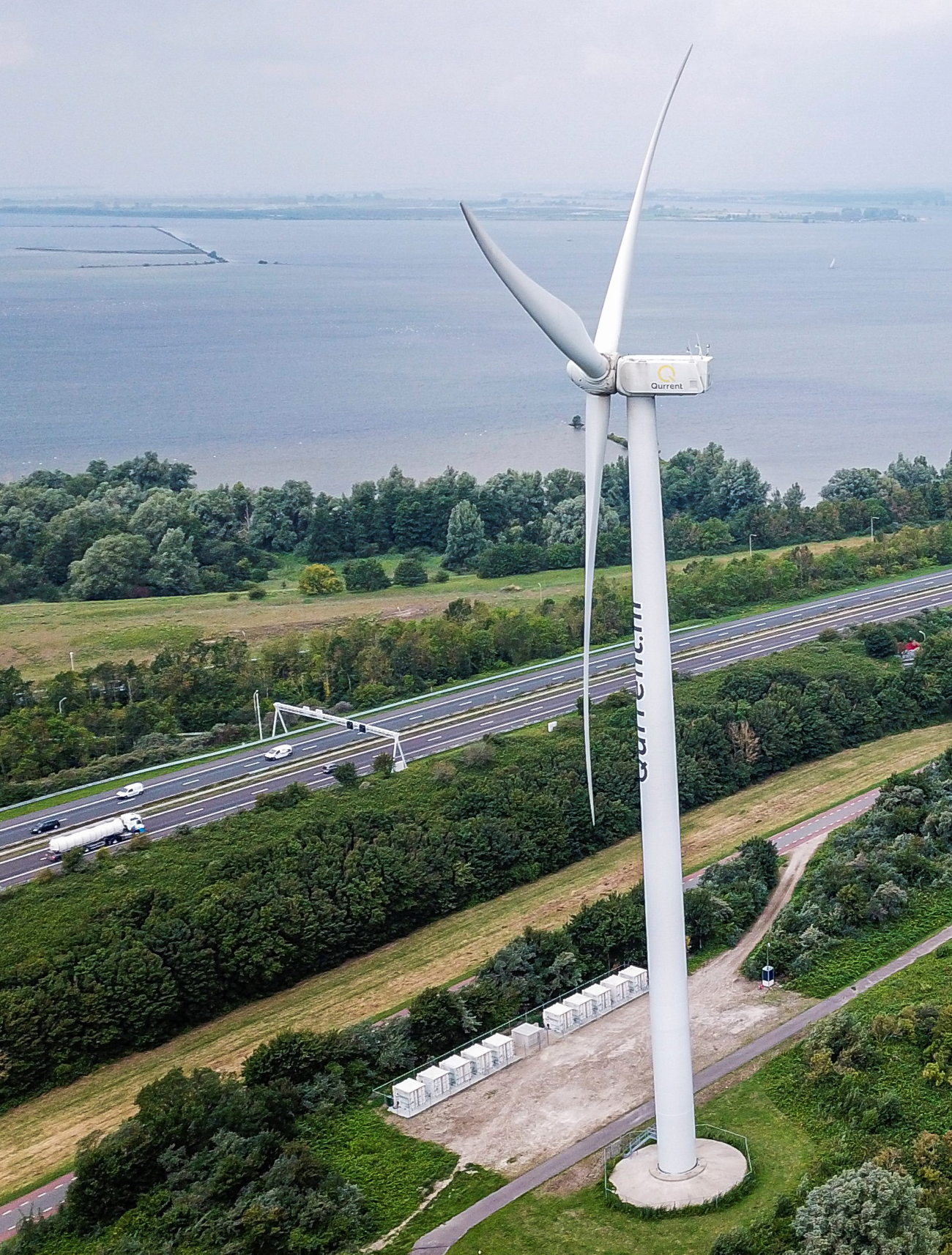
“ Andreas:
The applications
for energy storage systems are continuing to expand and, as a result, their suitability for a range of different industries ”
“ Marco:
We believed that a market for energy storage would emerge in Europe ”
“ Evert: I was
already busy
building solar panels to charge a battery at 14 years old ”
All of those early experiences have been very useful in expanding our understanding of using battery storage for benefit stacking – offering multiple benefits, for example energy supply and grid stability.
MR: In the early days we encountered various challenges. We had 100% faith in energy storage and knew we needed to innovate and invest but we obviously had some concerns about doing it. At that time, we were first movers and so there was lots of trial and error.
How did things develop from there?
ER: From 2012, we began working on a number of pilot and innovation projects. The CSGriP (Cellular Smart Grid Platform) project aimed to use battery storage for black start and backup power as well as general grid stability, to create a so called ‘self-healing’ microgrid. For us it was important because much of the advanced functionality we developed then still forms the basis of our energy storage solutions today.
The same applies to another early project we worked on, developing a battery energy storage system to supply additional energy to a fast charger at a service station, where the grid connection capacity was too limited to support it. Such situations will increasingly occur in future as more and more technologies, including fast charging, require grid connection.
Where did it all start?
MR: Our journey began in 2011. We believed that a market for energy storage would emerge in Europe. For us it was clear that solar and wind energy would become the winning future solutions for sustainable electricity production but that their fluctuating nature would present challenges. Energy storage was therefore going to become increasingly important in order to offset the mismatch between energy demand and supply and, in doing so, to provide power reliability and grid stability.
ER: Alfen’s first project, in 2011, was with Enexis, helping them to realise a neighbourhood battery. After that we started to combine battery storage with solar and wind energy. Our solution was a lithium battery with inverter, with a capacity of something like 30kW, for storing and discharging electricity. Obviously, things have moved on a bit since then!
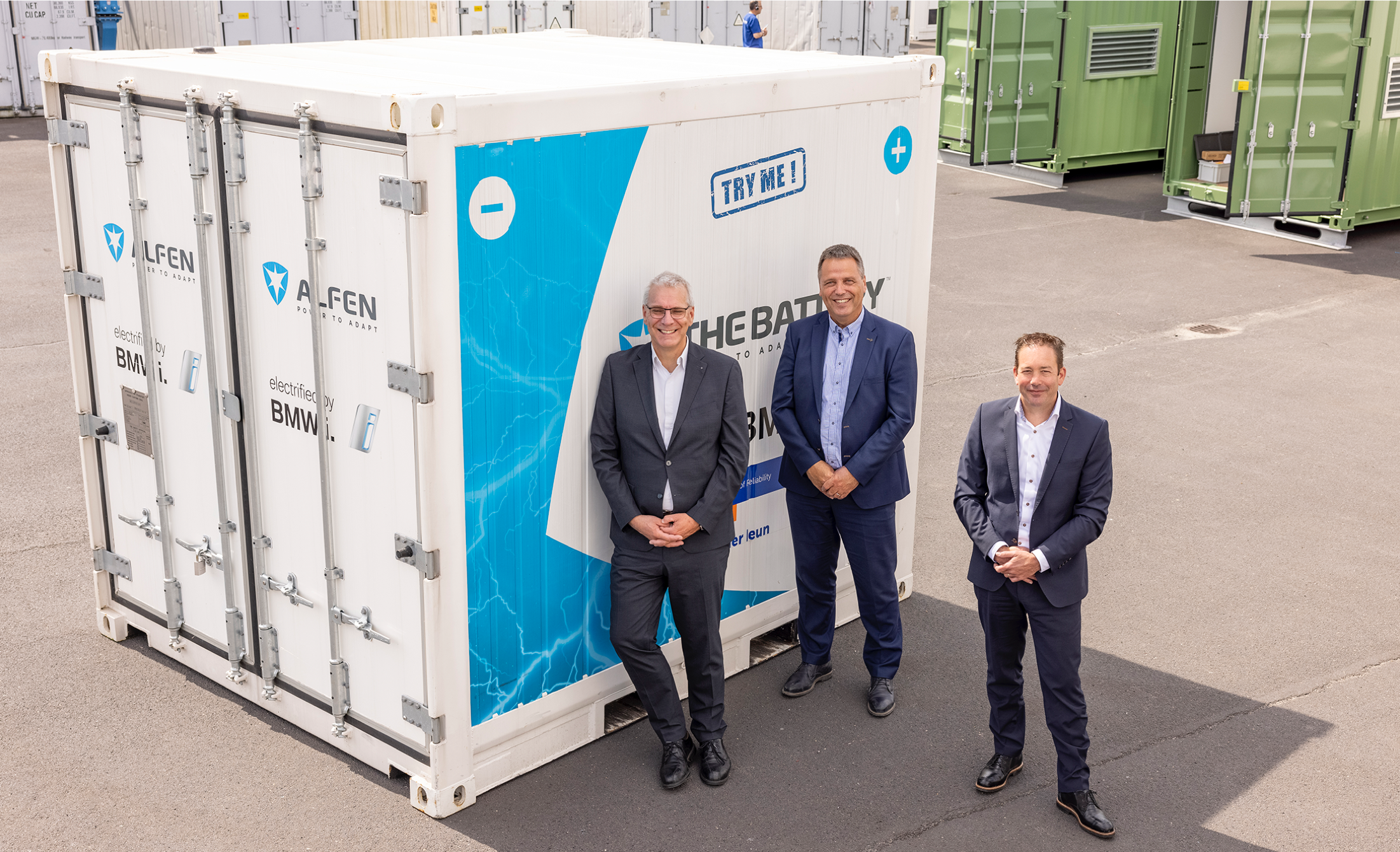
Business Development Manager
Evert Raaijen
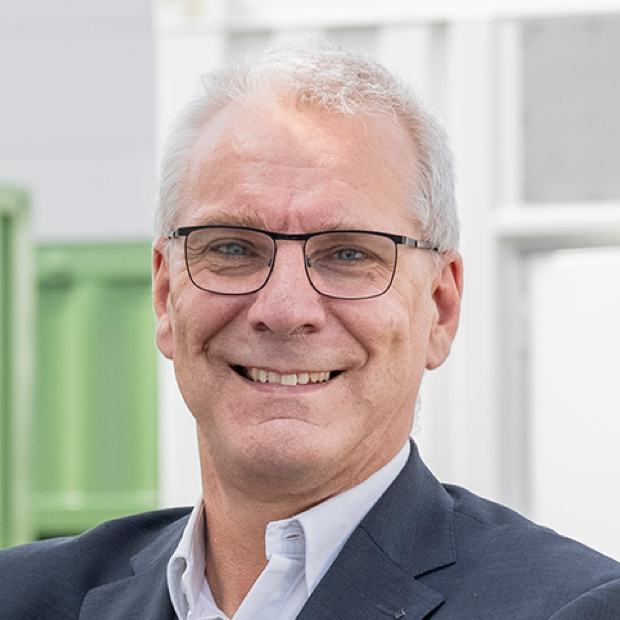
Business Unit Director Energy Storage Solutions
Andreas Plenk
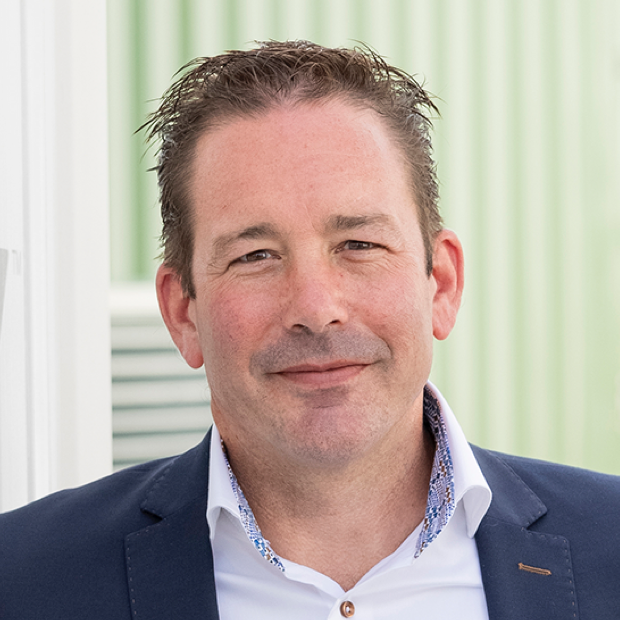
CEO & COO Alfen
Marco Roeleveld
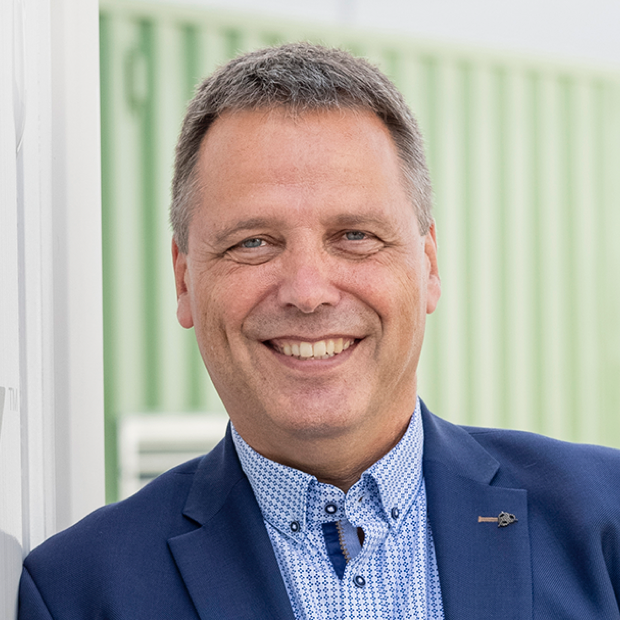
An interview with Marco Roeleveld, Andreas Plenk & Evert Raaijen (Alfen)
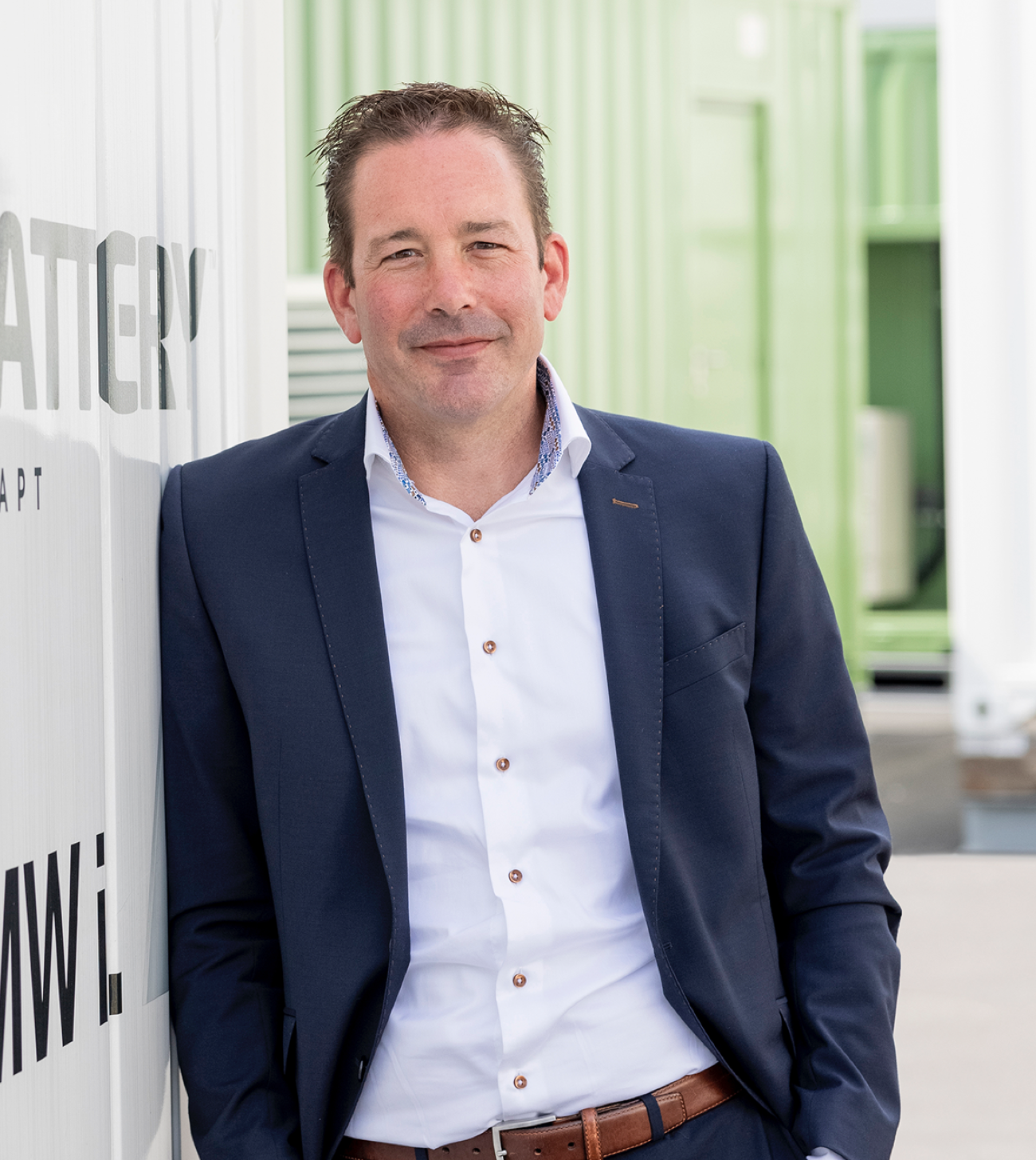
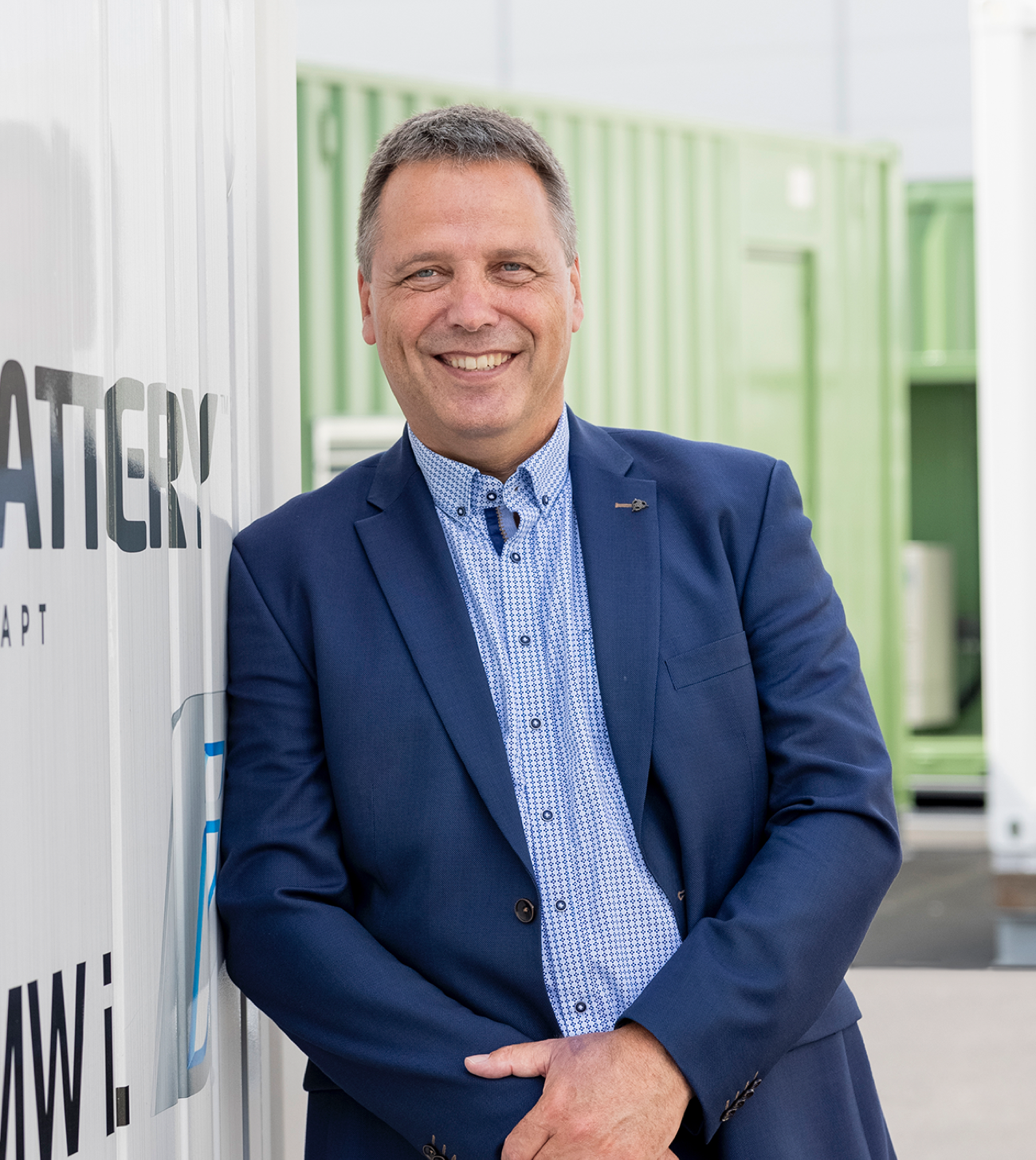



Go to next article

Go back
MR: We face a huge challenge worldwide. To combat human-induced climate change and ensure that the earth does not warm too much, we will have to decarbonise our society at a record pace. The most impactful way to do this is to electrify what we can and generate electricity sustainably which will mostly be done using wind or the sun. As this type of generation fluctuates, while we continue to desire electricity on demand, we will need energy storage. Battery energy storage is one of several solutions available but is expected to be the most important and so we will continue to innovate hard. The whole industry is still really at the start of this and so we have much work to do together. The potential is enormous!
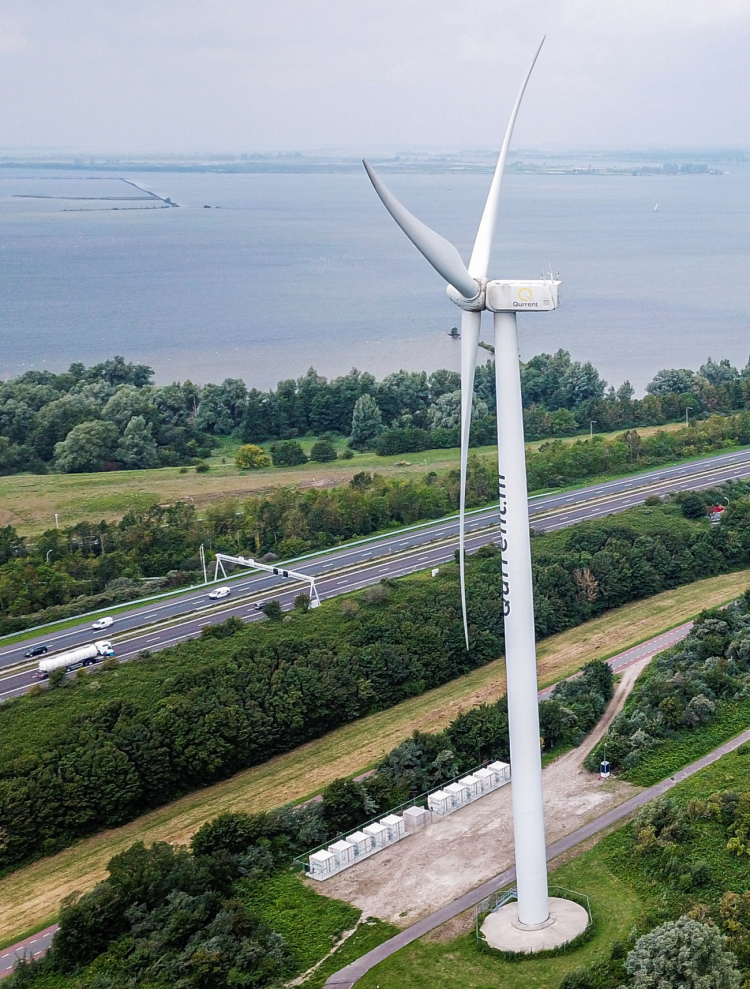
Watch video
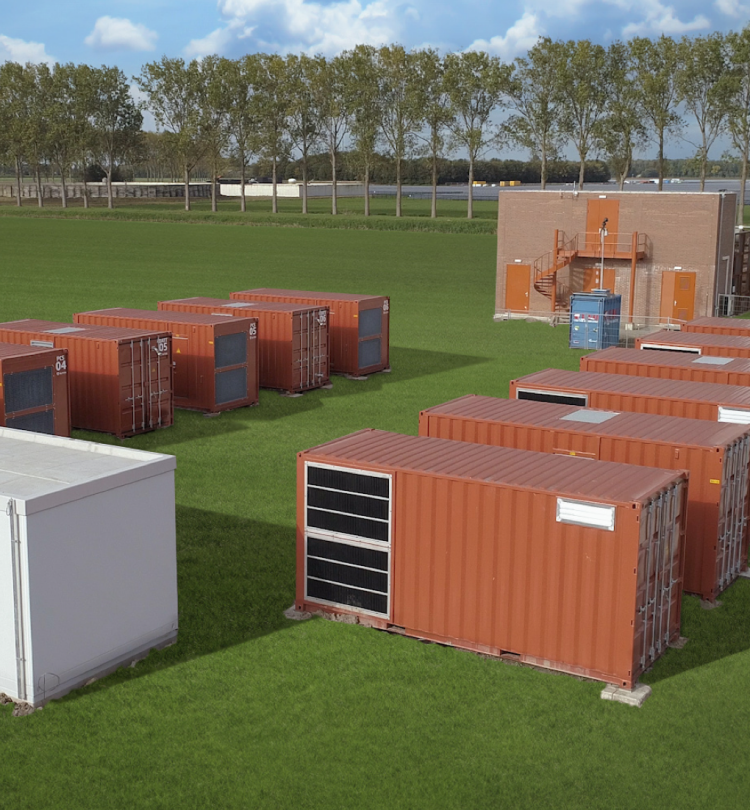
How do you see the role of energy storage systems in the future?
ER: The trend for the coming years is to lower c-rates - the rate at which a battery can be discharged relative to its maximum capacity. This is because greater penetration of renewable energy means that batteries are required to provide power over a longer period of time to rectify any surpluses and shortages. The business case is supported because lower c-rate batteries have lower costs, battery prices are falling and variation in energy prices is increasing.
As well as mobile solutions, another trend I’m seeing is combined wind and solar parks, developed incrementally. Storage and batteries create inertia by replacing the rotating mass of power stations, as energy production transitions from conventional power to renewable energy.
AP: The majority of battery energy storage applications are still traditional – so used to meet network stabilisation, congestion management and temporary storage needs - and these needs will only increase in future, as renewables penetration and energy demand continue to grow.
Watch video
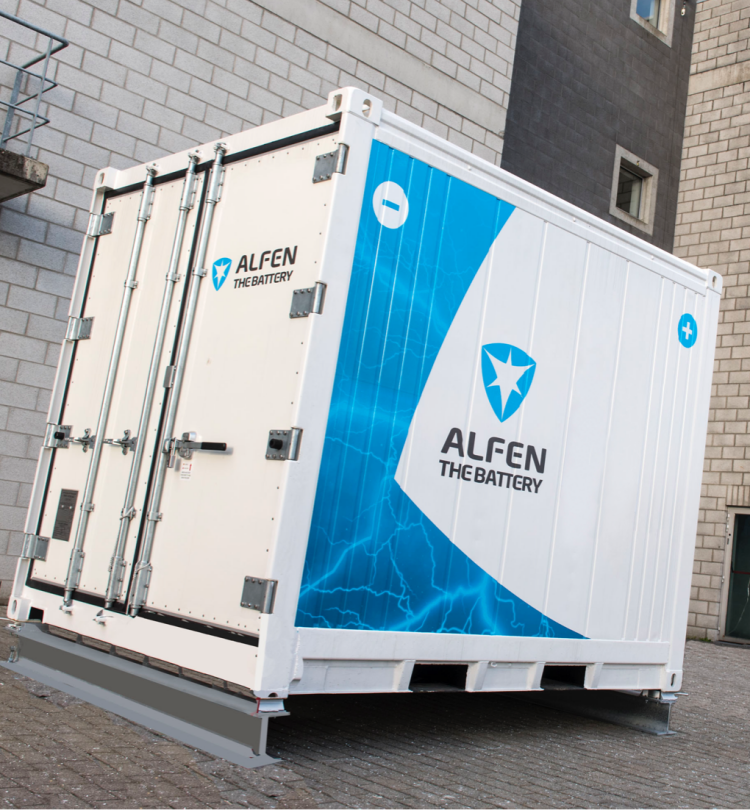
Tell us about the storage market today
AP: The applications for energy storage systems are continuing to expand and, as a result, their suitability for a range of different industries. Rather than being seen as simple storage devices, they are increasingly considered as part of the foundations of much larger, modular energy systems, offering multiple ‘stacked’ benefits. As a result, one of our own principels concerning storage is to ensure interconnectivity and scalability.
Our solutions are also increasingly being requested and deployed internationally. The majority are still used for network stabilisation and trade but, increasingly, this is only part of the story.
“ Andreas:
The applications
for energy storage systems are continuing to expand and, as a result, their suitability for a range of different industries ”
TheBattery Mobile added another dimension. How did it come about?
AP: In 2017, it struck me that, while I was not allowed to drive my trusty old car into many city centres, the same did not apply to diesel generators which seemed to be roaring at every construction and temporary event site in town. It became apparent that there was an opportunity to provide a cleaner solution but it would need to be smaller than our current storage solutions - and mobile, because of the temporary nature of the use in these locations. At the same time, the founders of green power solutions company, Greener, were having similar thoughts, mostly motivated by the desire to make festivals cleaner and so, in 2018, we delivered our first TheBattery Mobile to them. They now have 43 of them which they rent out for use in a very diverse range of situations and locations.
ER: Developing a mobile container meant we greatly increased the application of energy storage systems. Suddenly, there was a green alternative to a diesel generator. TheBattery Mobile uses automotive batteries which have been extensively tested for mobility applications and are therefore safe to be moved about.
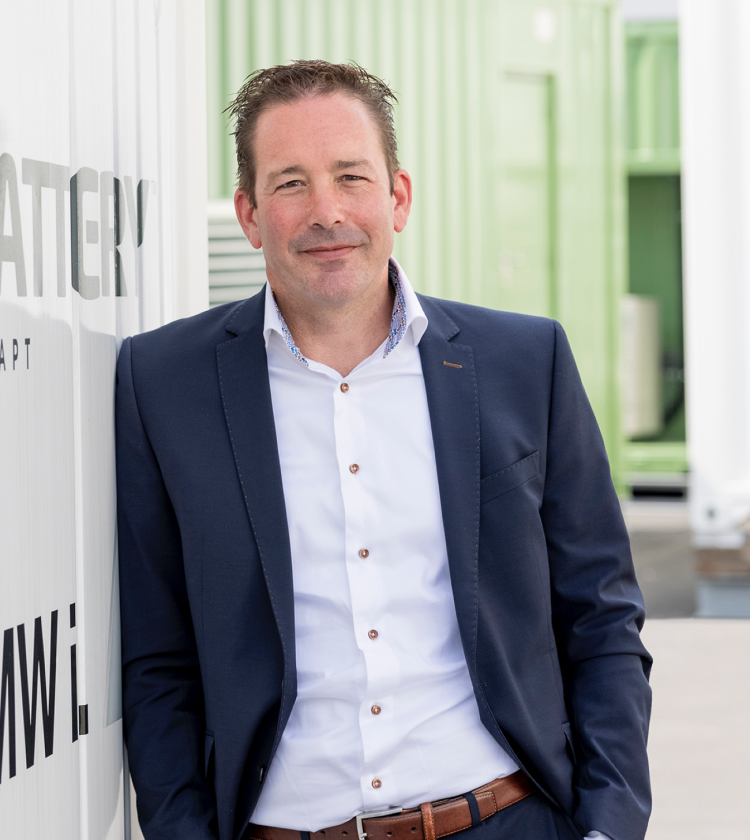
AP: We gained a lot of experience through trial and error though, much of it through pilot projects. This process was very necessary to arrive at our current high quality, reliable solution. Technically, the development has always gone well but some of the resulting products were too custom-made to make them commercially viable.
ER: From December 2015, when we actually started doing commercial projects, battery storage began to gain traction internally and externally and so we decided to scale up, which happened in 2016-2017. The early commercial projects typically saw batteries used for frequency response - network stabilisation based on frequency control. The very first was for onshore wind and this was soon followed by Vattenfall’s Alexia project, Engie, and many others.
AP: Frequency response is still an important use-case in almost all current projects.
“ Marco:
We believed that a market for energy storage would emerge in Europe ”
All of those early experiences have been very useful in expanding our understanding of using battery storage for benefit stacking – offering multiple benefits, for example energy supply and grid stability.
MR: In the early days we encountered various challenges. We had 100% faith in energy storage and knew we needed to innovate and invest but we obviously had some concerns about doing it. At that time, we were first movers and so there was lots of trial and error.
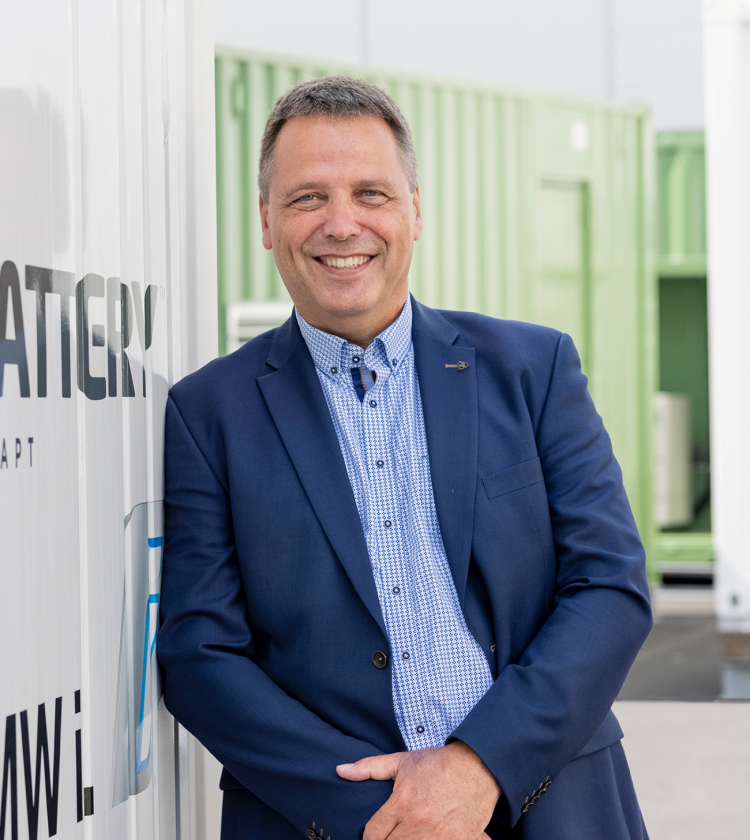
How did things develop from there?
ER: From 2012, we began working on a number of pilot and innovation projects. The CSGriP (Cellular Smart Grid Platform) project aimed to use battery storage for black start and backup power as well as general grid stability, to create a so called ‘self-healing’ microgrid. For us it was important because much of the advanced functionality we developed then still forms the basis of our energy storage solutions today.
The same applies to another early project we worked on, developing a battery energy storage system to supply additional energy to a fast charger at a service station, where the grid connection capacity was too limited to support it. Such situations will increasingly occur in future as more and more technologies, including fast charging, require grid connection.
“ Evert: I was
already busy
building solar panels to charge a battery at 14 years old ”
Where did it all start?
MR: Our journey began in 2011. We believed that a market for energy storage would emerge in Europe. For us it was clear that solar and wind energy would become the winning future solutions for sustainable electricity production but that their fluctuating nature would present challenges. Energy storage was therefore going to become increasingly important in order to offset the mismatch between energy demand and supply and, in doing so, to provide power reliability and grid stability.
ER: Alfen’s first project, in 2011, was with Enexis, helping them to realise a neighbourhood battery. After that we started to combine battery storage with solar and wind energy. Our solution was a lithium battery with inverter, with a capacity of something like 30kW, for storing and discharging electricity. Obviously, things have moved on a bit since then!

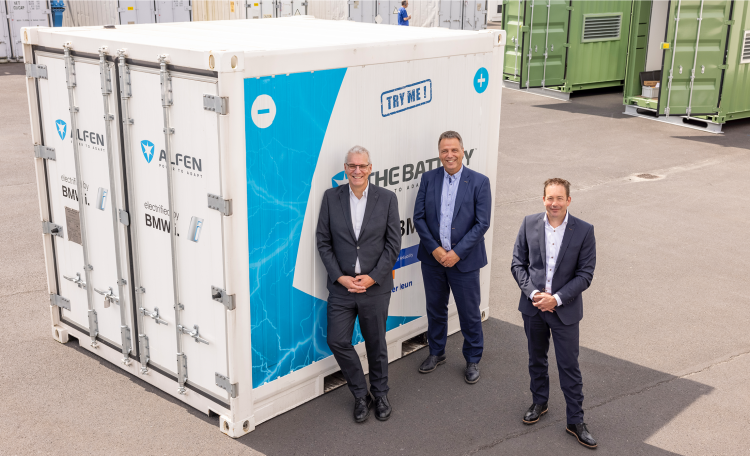



An interview with Marco Roeleveld, Andreas Plenk & Evert Raaijen (Alfen)

